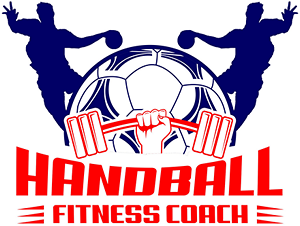So what is Plyometric Training, and how does it work?
The original theory and practice of plyometric training was introduced to the sporting world by Yuri Verkhoshansky, a scientific researcher who was also the Russian national track and field jumps coach. Yuri introduced plyometric training because it was his conviction that in order for athletes to develop a higher level of muscle performance, they needed to be presented with a stimulus that was unique and different from their usual training methods.
The original definition and form of training that Yuri used has been stretched (pardon the pun) to include other forms of training and definitions, and indeed today there are many various definitions and add-ons to the original form of plyometric training, as well as debate over what truly constitutes plyometric training. Such debates over minor intricacies are largely irrelevant for what we want from this program, however it does help to have a simple definition to base plyometrics on. As a result, I always go to the definition offered by world leading plyometric training expert Dr. Donald Chu who defines plyometrics as;
“Activities that involve and capitalise on the mechanisms of the stretch- shortening cycle to increase the efficiency of force production at a joint or to increase performance. Simply stated, plyometrics are exercises that enable a muscle to reach maximal strength in as short a time as possible.”
Sports conditioning world leader Vern Gambetta describes plyometric training and its aims in the following way;
“Plyometrics are movements designed to link strength and speed.’ Aimed at ‘stimulating the fast twitch muscle fibers so that you can generate force as quickly and efficiently as possible.”
“Plyos are any movement that uses the stretch-shortening cycle, a rapid muscle lengthening followed immediately by a rapid muscle shortening.”
So lets briefly expand on the key points from these definitions a little. Again we will only be sticking to what is most relevant and important to understand in order to get the most out of the method. We aren’t aiming to cover an in-depth analysis and discussion on all the in-depth characteristics of plyometrics, but rather keep the technical discussion to the minimum required in order to keep this discussion as practical and understandable as possible.
So plyometric training is a form of training that aims to add improvement in power output via training a more powerful and efficient stretch-shortening cycle. The stretch-shortening cycle of a muscle is basically;
1) The lengthening of a muscle (the eccentric phase). In plyometrics this is known as the loading phase, as the muscle-tendon unit is loaded and stretched eccentrically.
2) The stretch is followed by a brief coupling phase, also referred to as the amortisation phase (isometric phase in between the eccentric and concentric movements.) This is basically the transition phase between the loading phase (the stretch) and the unloading phase (the shortening), and is the most important part of the stretch shortening cycle in plyometrics. According to plyometric expert Donald Chu ‘If the transition between the loading and unloading phases is not continuous and rapid, delayed and disjointed coupling will occur, and the gained energy will be dissipated and lost as heat.’
3) The stretch is then coupled with the shortening of a muscle-tendon unit again (concentric phase), referred to in plyometrics as the unloading phase. This is the phase where any improvements in performance will normally be noticed, and where you ‘cash in’ on your improvements in plyometric movement.
As a quick example to think of, lets just quickly think of a vertical leap. The first thing you do is bend the knees and dip down, which works to stretch the muscles of the legs (eccentric), followed by a very brief coupling (isometric) action at the bottom, before changing directions explosively and shortening the muscles in a concentric action as you jump up. A concentric muscular action is always much more powerful when it is preceded by a stretch (eccentric phase.)



So therefore, plyometric training aims to take advantage of this stretch- shortening cycle as a training modality to improve power in various movements. In other words, plyometric training aims to improve the efficiency and power in which you switch from an eccentric lengthening immediately and smoothly into an explosive concentric shortening in a particular action. This is important because as world-renowned plyometric training expert Dr. Donald Chu says in his book Plyometric: Dynamic Strength and Explosive Power;
“The ability to rapidly switch from an eccentric action to a concentric phase is the hallmark of good athletes.”
As mentioned previously, a concentric action is always more powerful when preceded by a short eccentric stretch first. This greater power output as a result of the stretch shortening cycle is due to the elasticity of the muscular-tendon unit. That is, the muscular-tendon unit can briefly store and then release elastic energy following a stretch (the easiest way to think of this is by picturing a rubber band being stretched and then released.) The key difference with a muscular-tendon unit (compared to a rubber band) is that the elastic energy that is built can only briefly be stored, before the effect disappears. That is, if the elastic energy isn’t used immediately after the stretch, it will disappear. It should therefore become more obvious why we are aiming at improving the efficiency in which this stretch-shortening cycle is being used.
There is also a neural component to plyometrics along with this structural/muscular component, where structures known as golgi tendons within the muscles are also trained. In short, these little tendons within the muscle monitor the rate of change in length of a muscle as a protective mechanism, whereby if the golgi tendon senses a muscle stretching too quickly, it will lead to that muscle to contract and therefore shorten. This exists to stop a muscle from lengthening too much and too quickly, and tearing as a result, and is also responsible for the plyometric action. In short, plyometric training trains this system to tolerate a longer stretch before the contraction, and therefore producing a more powerful contraction.
An interesting point to note here on the changes in muscle length, and the storage of elastic energy, is that despite the commonly held belief always being of muscles being the more elastic and stretchy and storing the majority of the elastic energy, according to Donald Chu in his book Plyometrics: Dynamic Strength and Explosive Power, the tendon has been found to be the main contributor to length changes in muscle-tendon units as well as the storage of elastic energy.



“Players jump an average of 16-20 times per match. Plyometrics is generally accepted as the best way to improve the spring like qualities of the leg muscles, allowing players to jump higher.”
Marco Cardinale
A further note on our definition of plyometrics, and the forms of exercises that we include under this banner;
World leaders in sports conditioning Vern Gambetta and Mark Verstegen both classify plyometrics as only exercises that fall under the categories of jumps (2 legs), bounds (transfer from 1 leg to another) and hops (1 leg). They choose to separate exercises such as those involving medicine balls and other tools as being their own separate form of training. So if you look at certain other resources don’t let this confuse you. For simplicity and practicality’s sake, we put all these together under the same banner, as they all fit in with the simple definition and concepts put forward already by Dr. Donald Chu. After all, all we are really interested in is the aim of our training, rather than semantics about theories and classifications.
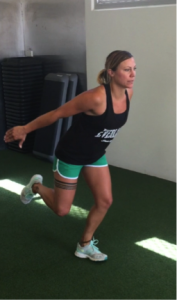
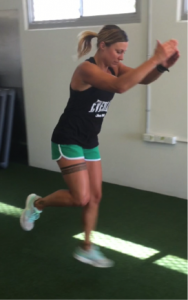
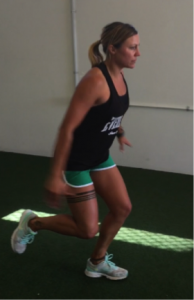
So whilst not strictly defined as plyometric training by many coaches, the fact is that they all rate medicine ball training as a key conditioning tool, when used appropriately, and specific to the sport. More detail on medicine ball training is a discussion for another day. Stay tuned as we delve into plyometric training exercises next up.
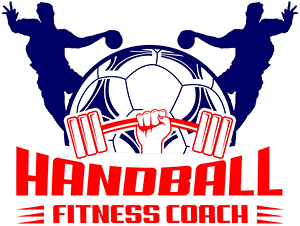
Fitness Coach
